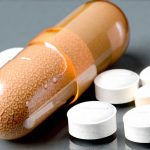Maintaining optimal health often involves navigating complex relationships between different aspects of our lifestyle – diet being central among them. Protein, essential for countless bodily functions from muscle repair to hormone production, is frequently discussed in the context of fitness and wellbeing. However, for some individuals, particularly those with sensitive bladders or conditions like Interstitial Cystitis (IC), a high protein intake can inadvertently contribute to urinary frequency, urgency, or even discomfort. It’s not about eliminating protein; it’s about finding a harmonious balance that supports both nutritional needs and bladder health. This article will explore the interplay between protein consumption and bladder comfort, offering practical strategies for managing this delicate relationship. Understanding these nuances is crucial for anyone seeking to enjoy a protein-rich diet without compromising their quality of life.
Many individuals with bladder sensitivities report experiencing worsened symptoms after consuming specific foods or beverages. While often individualistic – meaning triggers vary significantly from person to person – protein sources frequently appear on these lists. This isn’t necessarily due to protein itself being inherently irritating, but rather the metabolic byproducts created during its digestion and processing, or the specific composition of certain protein-rich foods. Furthermore, dehydration, which can be exacerbated by a high protein diet if fluid intake isn’t adequately increased, is a well-known bladder irritant. This article aims to provide information that empowers readers to make informed choices about their protein intake, recognize potential triggers, and implement strategies for minimizing bladder discomfort while still reaping the benefits of this vital macronutrient.
The Connection Between Protein Metabolism & Bladder Irritation
The link between protein consumption and bladder symptoms isn’t always straightforward, but it centers around how our bodies process protein. When we ingest protein, it’s broken down into amino acids, which are then used for various functions or converted into nitrogenous waste products like urea and creatinine. These waste products are filtered by the kidneys and excreted through urine. A higher protein intake naturally leads to increased production of these waste products, placing a greater burden on the kidneys and potentially increasing urinary frequency and concentration. This concentrated urine can be more irritating to a sensitive bladder lining.
It’s important to note that this effect isn’t universally experienced. Individuals with healthy bladders typically don’t encounter issues, as their bladders are able to accommodate increased volume and acidity without triggering symptoms. However, for those with conditions like IC or overactive bladder (OAB), even moderate increases in urinary concentration can be problematic. Additionally, certain amino acids themselves have been implicated in potentially irritating the bladder lining, although research on this is still evolving.
Beyond the waste products, the source of protein also plays a role. Processed meats and those high in purines (like organ meats) may contribute to increased uric acid levels, which can further irritate the bladder. Similarly, some individuals find that dairy proteins or soy-based proteins exacerbate their symptoms, again highlighting the individualistic nature of these sensitivities. Finding your personal protein sweet spot requires mindful experimentation and observation.
Identifying Your Protein Tolerance Level
Determining how much protein you can comfortably consume without triggering bladder symptoms is a process of self-discovery. It’s not about arbitrarily restricting protein; it’s about finding your individual threshold. Here’s a stepwise approach:
- Keep a detailed food diary: For at least one to two weeks, meticulously record everything you eat and drink, along with any bladder symptoms experienced (frequency, urgency, pain levels). Be specific – note the time of day, severity of symptoms, and what you consumed prior.
- Start with a baseline: Begin by reducing your protein intake slightly below your normal level for a few days to establish a “baseline” symptom-free period. This helps determine if protein is indeed a contributing factor.
- Gradual reintroduction: Slowly increase your protein intake in small increments (e.g., adding an extra serving of lean protein per day). Continue monitoring your bladder symptoms closely after each adjustment.
- Identify trigger foods: Pay attention to which types of protein seem to worsen your symptoms. Is it red meat, poultry, fish, dairy, or plant-based sources? This helps narrow down potential irritants.
- Hydration is key: Throughout this process, prioritize adequate hydration (see section below). Dehydration will amplify any bladder irritation, making accurate assessment difficult.
This process requires patience and consistent tracking. It’s also beneficial to consult with a registered dietitian or healthcare professional who can provide personalized guidance based on your specific needs and medical history. Remember that there’s no one-size-fits-all answer, and the goal is to find a sustainable protein intake that supports both health and comfort.
Protein Sources & Bladder Friendliness
Not all protein sources are created equal when it comes to bladder sensitivity. Some tend to be more well-tolerated than others, depending on individual responses. Generally:
- Lean proteins are preferred: Chicken breast, turkey, fish (especially salmon and cod), and plant-based options like tofu and lentils are often better tolerated than red meat or processed meats.
- Plant-based proteins offer variety: Incorporating a diverse range of plant-based proteins can reduce the risk of sensitivity to any single source. Options include beans, legumes, quinoa, and tempeh.
- Avoid high-purine foods: Limit organ meats, shellfish, and excessive amounts of red meat, as these contribute to uric acid production.
- Dairy considerations: Some individuals with bladder issues find that dairy products exacerbate their symptoms, while others do not. Experimenting with dairy alternatives (almond milk, soy milk) or lactose-free options may be helpful.
It’s vital to emphasize the importance of quality over quantity. Choosing organic, grass-fed protein sources when possible can minimize exposure to potential additives and toxins that could irritate the bladder. Furthermore, proper preparation methods – such as avoiding excessive frying or grilling at high temperatures – can also contribute to better tolerance.
The Role of Hydration in Bladder Management
Adequate hydration is paramount for bladder health, especially when consuming a protein-rich diet. As mentioned earlier, increased protein intake leads to more concentrated urine, which can be irritating to a sensitive bladder. Drinking sufficient fluids helps dilute the urine, reducing its acidity and minimizing irritation.
Here are some practical tips for staying hydrated:
- Aim for eight glasses of water per day: This is a general guideline; individual needs may vary based on activity level, climate, and other factors.
- Sip throughout the day: Rather than drinking large amounts of water at once, spread your fluid intake evenly throughout the day.
- Avoid bladder irritants: Limit caffeinated beverages, alcohol, carbonated drinks, and artificial sweeteners, as these can further aggravate bladder symptoms.
- Consider electrolyte balance: Excessive hydration without adequate electrolytes can lead to imbalances. Consider adding a pinch of sea salt to your water or consuming electrolyte-rich foods like bananas and coconut water.
It’s also important to note that dehydration often masquerades as hunger, so staying properly hydrated can prevent unnecessary snacking and contribute to overall wellbeing. Monitoring urine color is a simple way to assess hydration levels – pale yellow indicates adequate hydration, while dark yellow suggests you need to drink more fluids.
Strategies for Minimizing Bladder Discomfort
Beyond adjusting protein intake and prioritizing hydration, several other strategies can help minimize bladder discomfort:
- Frequent Voiding: Don’t hold your urine for prolonged periods. Regular, scheduled voiding helps prevent overfilling the bladder and reduces urgency.
- Pelvic Floor Exercises (Kegels): Strengthening the pelvic floor muscles can improve bladder control and reduce leakage, but avoid overdoing it, as excessive Kegels can sometimes worsen symptoms in certain individuals. Consult with a physical therapist specializing in pelvic health for personalized guidance.
- Stress Management: Stress is a well-known trigger for bladder symptoms. Practicing relaxation techniques like deep breathing exercises, yoga, or meditation can help manage stress levels and reduce symptom flare-ups.
- Dietary Modifications: In addition to protein adjustments, identify and eliminate other potential bladder irritants from your diet, such as spicy foods, citrus fruits, tomatoes, and artificial sweeteners.
It’s crucial to remember that managing bladder health is often a collaborative effort involving healthcare professionals. A urologist or pelvic floor physical therapist can provide accurate diagnosis, personalized treatment plans, and ongoing support. Don’t hesitate to seek professional guidance if your symptoms are persistent or significantly impacting your quality of life.
This article provides general information and should not be considered medical advice. Always consult with a qualified healthcare professional for any health concerns or before making any decisions related to your health or treatment.





















